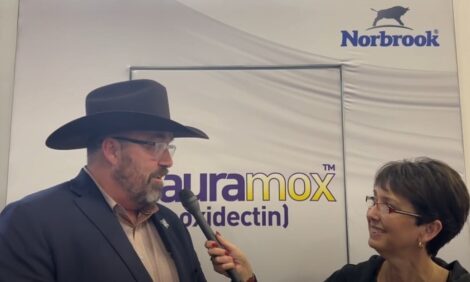



Your calving season checklist
Tips for newborn calves that may need a little extra attentionAs cows and heifers have their babies over the next few months, Oklahoma State University Extension is a trusted resource for ranchers with any calving questions.
Oklahoma’s winter and spring can be a roller coaster ride of sporadic temperatures. No matter the weather, Rosslyn Biggs, an OSU Extension beef cattle specialist and veterinarian, said ranchers should be ready to assist during labor or delivery.
“We only need to wait 30 minutes on mature cows, and we shouldn’t wait any longer than an hour with first-calf heifers,” Biggs said. “If they’re not making any progress during that time frame, then we need to be able to intervene.”
Expecting cows and heifers should be penned in section pastures in case one needs to be hauled to a barn for closer observation or to the veterinarian. Having a trailer ready to go and a working chute nearby are also helpful in emergencies.
In extreme cold, wintry conditions, new calves are not able to thermoregulate their body temperature on their own. Biggs said even in temps as high as 55 degrees, the wind chill can impact calves still wet from birth. Providing windbreaks, barns or other shelters for expecting cows and heifers can reduce the impact of frigid weather in extreme conditions. Ranchers should keep towels or old blankets handy to warm up the calf.
“Every producer needs to keep on hand an inexpensive digital thermometer from the drug store,” she said. “If a calf is running a fever, or if they have diarrhea, they can get dehydrated quickly. We want to get them fluids if dehydrated.”
Biggs has compiled a calving kit checklist for babies who need a little extra attention. Ranchers should keep the following items clean, functional and readily accessible:
- Veterinary emergency number in cell phone
- Breeding dates and due dates with associated sire
- Calving book
- Thermometer
- Flashlights with batteries
- Eartags with marker
- Tag applicator
- Dilute betadine or chlorhexadine for navel
- Catch pen and functional chute
- 5-gallon bucket
- Calf puller in working order
- Obstetrical chains and handles
- Calf sled
- Syringes and needles
- Exam and obstetrical gloves
- Obstetrical lubricant
- Clean towels
- Straw or hay for bedding
- Esophageal feeder
- Colostrum or colostrum replacer
- Medications prescribed by your veterinarian such as pain medications
- Halter
- Lariat
- Sorting stick
- Large trash bags
- Disinfectants
Once a calf is born, Biggs said they should be standing on their own and nursing within one hour. Otherwise, a rancher may need to help the calf up and encourage the connection between mother and baby. This is easier said than done, depending on the protective or aggressive manner of the cow or heifer.
“I like to see a calf get colostrum from the cow in four to six hours after birth,” Biggs said. “If a producer questions whether or not the calf got colostrum, they need to administer it.”
Biggs also said ear tagging is best in the calf’s earliest days of life. Cows will sometimes swap calves, and making future genetic selections is most effective when based on accurate offspring data.
“We want to keep good records starting with simple things like birth date, sex and, ideally, a birth weight to hopefully make some long-term decisions once we get through the calving season,” she said.
Biggs discusses the causes and treatment for calves with persistent scours and provides a step-by-step set of calving instructions in the OSU College of Veterinary’s Veterinary Viewpoints column.
Biggs noted an extreme climate event can trigger stress in cows, which is why some may calve during winter storms. Ranchers on the calving clock can attempt to help their cows and heifers deliver during the day instead of those cold nights by applying a proven feeding technique. Feeding the herd at night is suspected to have a hormonal effect on expecting cows that causes them to give birth during daylight hours.


